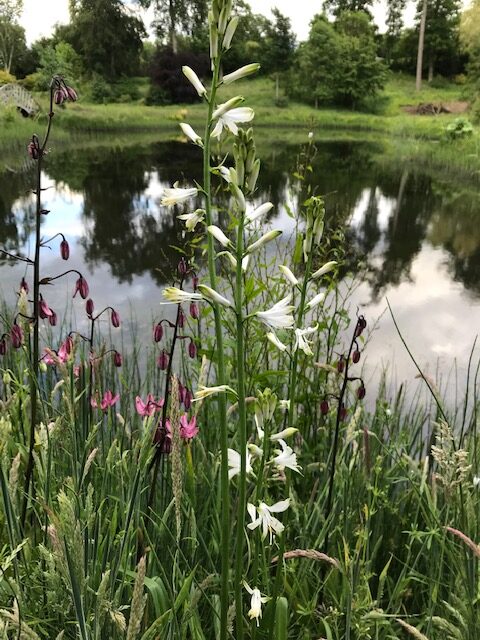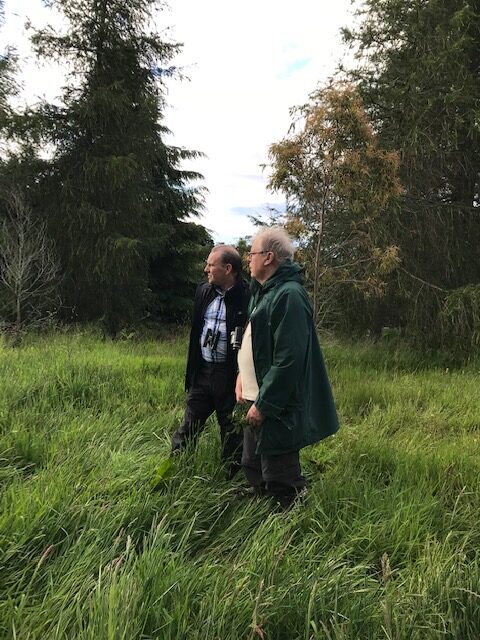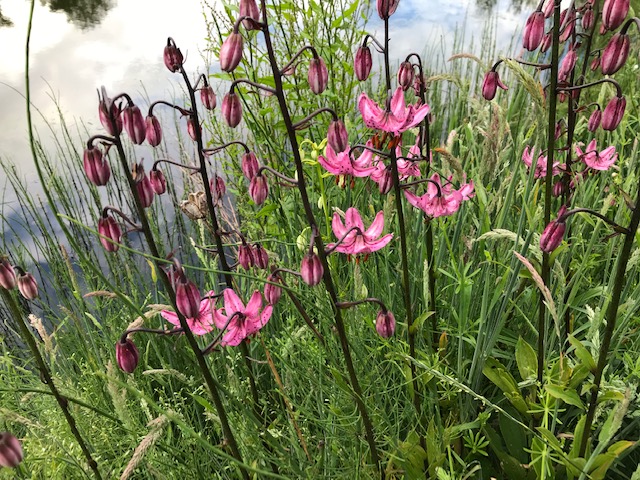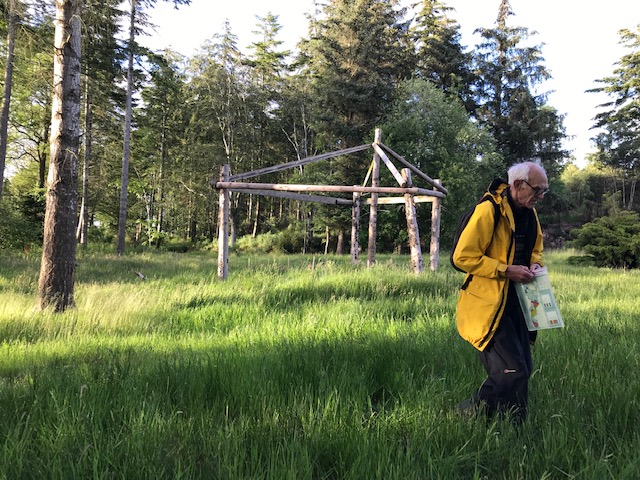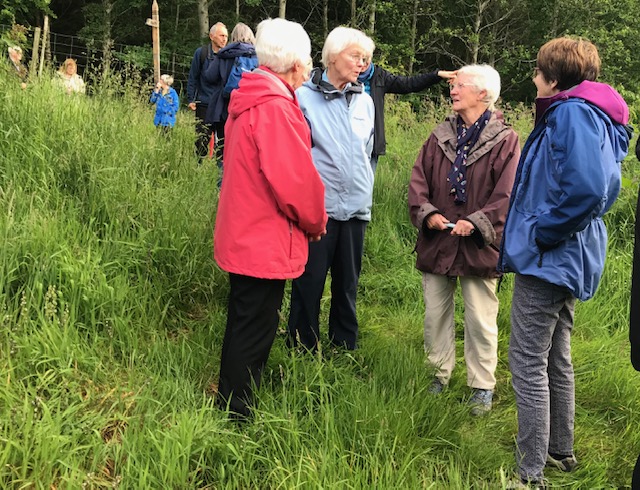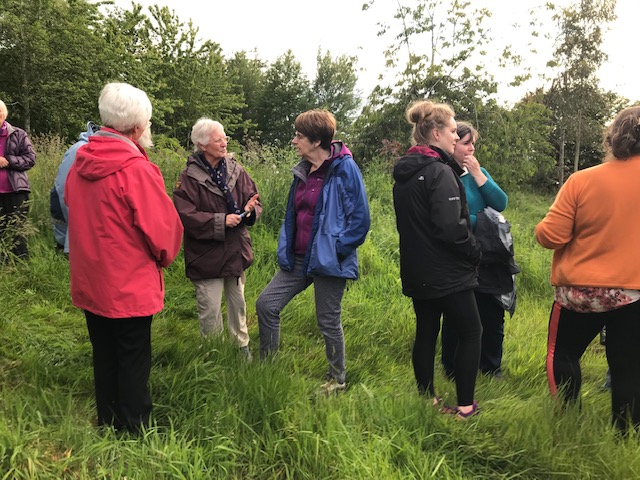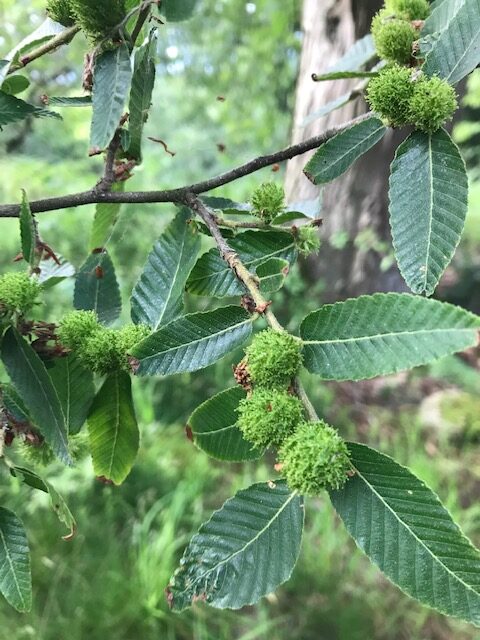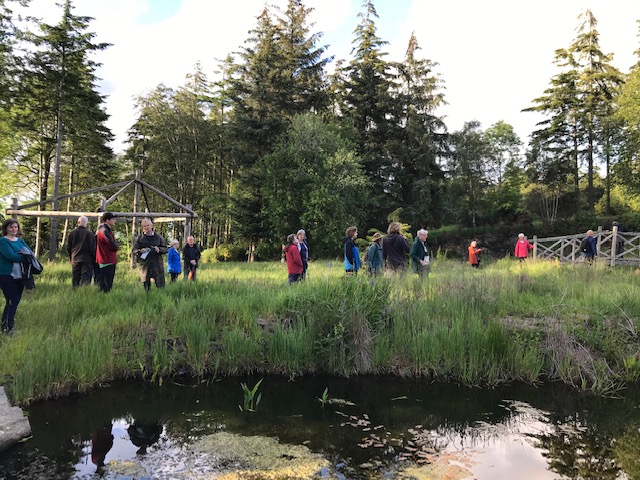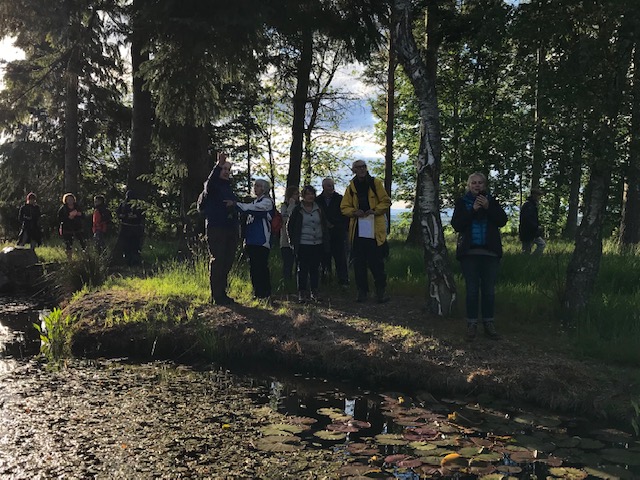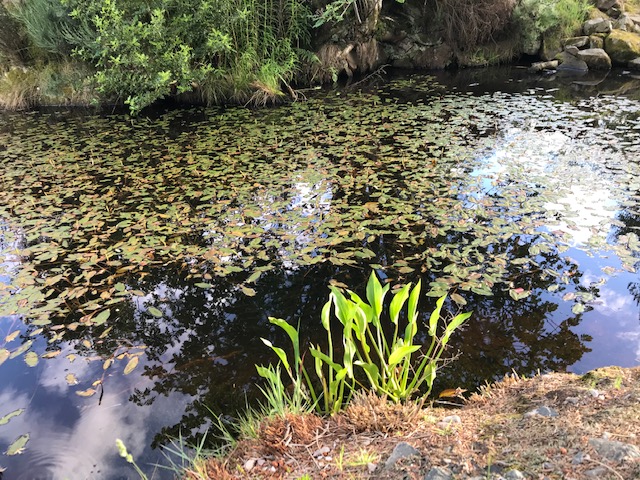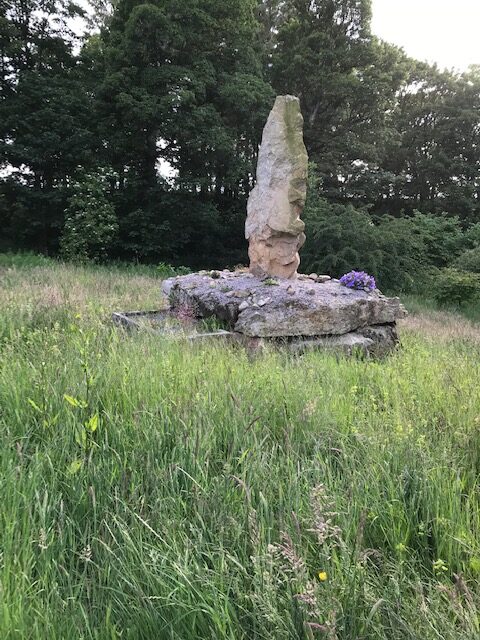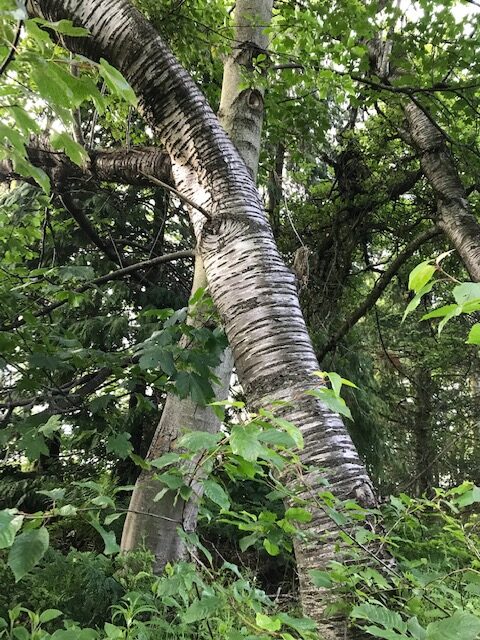22 Moray Field club members were joined by 13 participants in the Moray Walking Festival and 7 guests (42 in total) for a leisurely midsummer ramble around Burgie Arboretum. Unfortunately, the owner, Hamish Lochore, was unable to accompany us and we missed his enthusiasm and expertise. One of his assistants, Tom Cameron, led us through the different areas of the garden and answered questions. After heavy rain earlier, the evening was lovely with clear views across to Findhorn Bay and beyond. Burgie Estate was in the ownership of the Dunbar family from the mid 16th century until 1908, when it was bought by the Thomson family. The Estate now consists of just over 1000 acres. The Arboretum was started in the 1970s but was severely affected by Dutch Elm disease. The present owner, Hamish Lochore, took the decision in 2008 to “clear it up” and plant new trees. The Arboretum has been divided into zones with a view to creating colour and interest throughout the year. Most of the plants are grown from seed collected by the owner. These zones include the Japanese garden, the Eucalyptus plantation, the Oak Wood, the Chile Bank, the Asia Bank, the Nut Grove, the Bog Wood, Bog Garden, Lime Collection, and Magnolia collection. There is an Honesty Box at the entrance to the Arboretum, raising money for World Horse Welfare and the Sandpiper Trust, which provides rapid response medical care in rural areas across Scotland. Suggested donation : £3. A visit to Burgie Arboretum is a rewarding experience at any time of the year. Amanda McAlister kept a record of the flora and Ian Suttie recorded the bird life.
Bird Notes by Ian Suttie
The mid summer sun shone on the Club`s evening walk through the open woodland of the arboretum then on to the estate`s Japanese garden near Easter Lawrenceton farm. Chaffinches and Song Thrushes were the loudest songsters, with 5 of each in the whole walk, and another thrush was raging in alarm at some predator, perhaps squirrel or magpie at its nest in thick foliage. Also in song were 4 Blackcaps, many Woodpigeons and a Blackbird, while a family party of Great Tits chatted as they fed on insects in a bird cherry tree. Some rough ground near the Japanese garden had proved the right habitat for a Yellowhammer, which sat on a gorse bush and tail flicked in the fading sunshine. In the more landscaped garden a late song came from a Willow Warbler, in a willow tree, and a Chiffchaff was calling from a conifer above the small cliff. The final songster was a Wren, trilling its goodnight from the depths of a bramble thicket.

